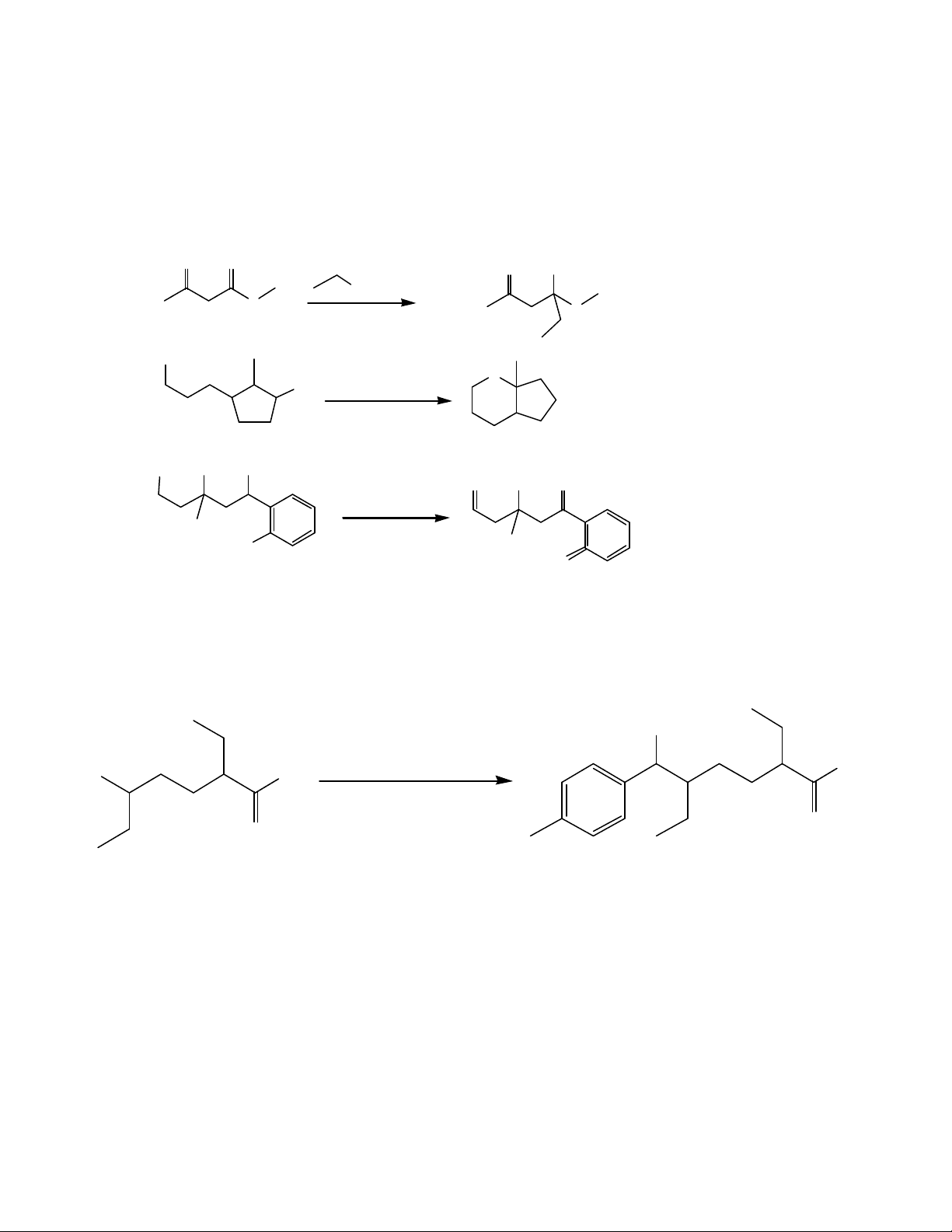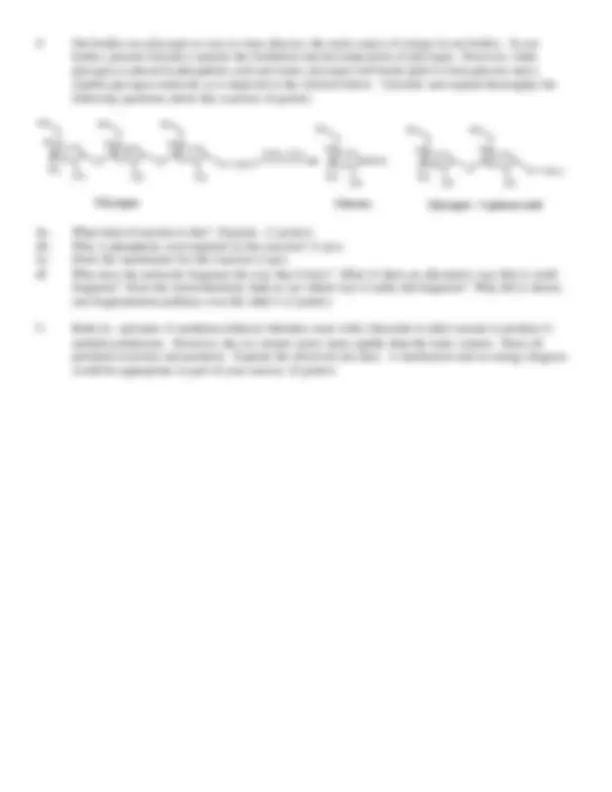



Study with the several resources on Docsity

Earn points by helping other students or get them with a premium plan


Prepare for your exams
Study with the several resources on Docsity

Earn points to download
Earn points by helping other students or get them with a premium plan
Community
Ask the community for help and clear up your study doubts
Discover the best universities in your country according to Docsity users
Free resources
Download our free guides on studying techniques, anxiety management strategies, and thesis advice from Docsity tutors
Material Type: Assignment; Class: Organic Chemistry I; Subject: Chemistry; University: Whittier College; Term: Fall 2003;
Typology: Assignments
1 / 2

This page cannot be seen from the preview
Don't miss anything!


Mg Br
Na 2 Cr 2 O 7 / H 2 SO 4 / H 2 O
Et 2 O O
OH O^ (Etc.)
OH OH O^ (Etc.)
Glycogen (^) Glucose (^) Glycogen - 1 glucose unit
4a.4b. What kind of reaction is this? Exp lain. (1 points)Why is phosphoric acid required in this reaction? (1 pts) 4c.4f. Draw the mechanism for this reaction (2 pts)Why does the molecule fragment the way that it does? (Hint: Is there an alternative way that it could fragment? Does the stereochemistry help us see which way it really did fragment? Why did it chooseone fragmentation pathway over the other?) (2 points)